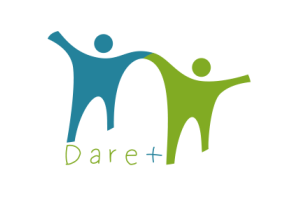

Day One: Session 1. Understanding and Defining the Competence.
Targeted competences
Conflict Transformation
Connection to programme competences or aims
The challenge nowadays is to constructively resolve or, in other words, transform conflict trying to find creative goals that satisfy the needs of all parties and, of course, without any kind of violence. Conflict transformation means “to envision and respond to the ebb and flow of social conflict as live-giving opportunities for creating constructive change processes that reduce violence, increase justice in direct interaction and social structures, and respond to real life problems in human relationships”(Lederach, 2015).
Learning outcomes for the session
At the end of this session trainers will be able to:
- Understand the importance of conflict as something inherent in human interaction
- Reconsider the definition of conflict as a positive tool for social changes
- identify the different phases in the process leading to conflict and the attitudes to deal with conflict
- Adopt the challenge of developing attitudes and strategies to deal with conflict
Pre-requisite learning/competence
Trainers will have some experience working with students in non-formal contexts. Moreover, it is recommended that they have some knowledge about the main ideas of conflict transformation; otherwise they could consult some of the documents listed in the following section.
Resources
For the training session, trainers will need a laptop, a projector and a Power Point presentation to highlight the main contents and activities of the session.
Trainers can access to the following resources in order to complete their learning about this topic:
Carnevale, P. J. (2014). Creativity in the Outcomes of Conflict. In P. T. Coleman, M. Deutsch and E. C. Marcus (eds). The Handbook for Conflict-transformation: Theory and Practice. San Francisco: Jossey-Bass, 490-512.
Cascón-Soriano, F. (2001). Educar en y para el conflicto. Barcelona: Cátedra UNESCO sobre paz y derechos humanos.
Galtung, J. (2000). Conflict transformation by peaceful means: The Transcend method. UN.
Lederach, J. (2015). Little Book of Conflict Transformation: Clear Articulation Of The Guiding Principles By A Pioneer In The Field. New York: Skyhorse Publishing, Inc.
Mizrahi, A. (2009). 100 ideas para la resolución de conflictos: recursos para el aula. Troquel.
UNESCO (1996). From a Culture of Violence to a Culture of Peace. París: UNESCO Publishing.
Session duration
It is recommended that this session lasts for, at least, 90-120 minutes
Number of participants
Ideal number of participants: 15-20 (although many more can be accommodated)
Session description
Here is a basic recommended outline for the training session on introducing conflict-resolucion competence to future trainers:
- Welcome and introduction to the session. Here it is possible to do an ice-breaker activity in the case that participants do not know each other.
- Brain storming about the meaning of the word conflict for the participants. To do this, they have to say the first word that comes to their mind related to the topic. The words are listed and discussed with the group.
- Reconsidering the concept. It is important that participants reflect on the positive aspects of conflicts. The trainer lists these positive aspects in the Power Point presentation and highlights the definition of conflict as an opportunity for development, learning and improving. If the conflict is inherent to the human being, learning how to deal with it will enhance learning experiences. Participants exchange their impressions about this approach.
- Explanation of some aspects to bear in mind for the management and transformation of conflicts with the support of the Power Point presentation. These aspects have been collected from the previous resources, especially from Cascón-Soriano (2001). Participants can comment and discuss in the whole group their opinions about these issues:
- Phases of the conflict.
- Attitudes to deal with the conflict. It is important to highlight that these attitudes are neither good nor bad, but depend on the situation. To understand these concepts the activity of blue ribbon extracted, from Mizrahi (2009), can be proposed.
- Importance of prevention (non-violent intervention) and introduction of intervention tools in the different stages.
- Training for working different aspects involving conflict transformation:
- Communication. Types of communication that we use when we are involved in a conflict: assertiveness, passiveness and aggressiveness.
- The importance of active listening.
- Creativity as a tool to deal with conflict transformation.
- The trainer can give some examples of other activities with which they can work in the future all these aspects (Examples are included in the Power Point presentation).
- Last questions and evaluation of the session
Mode of evaluation
15 min focus group discussion on achievement of learning outcomes.


